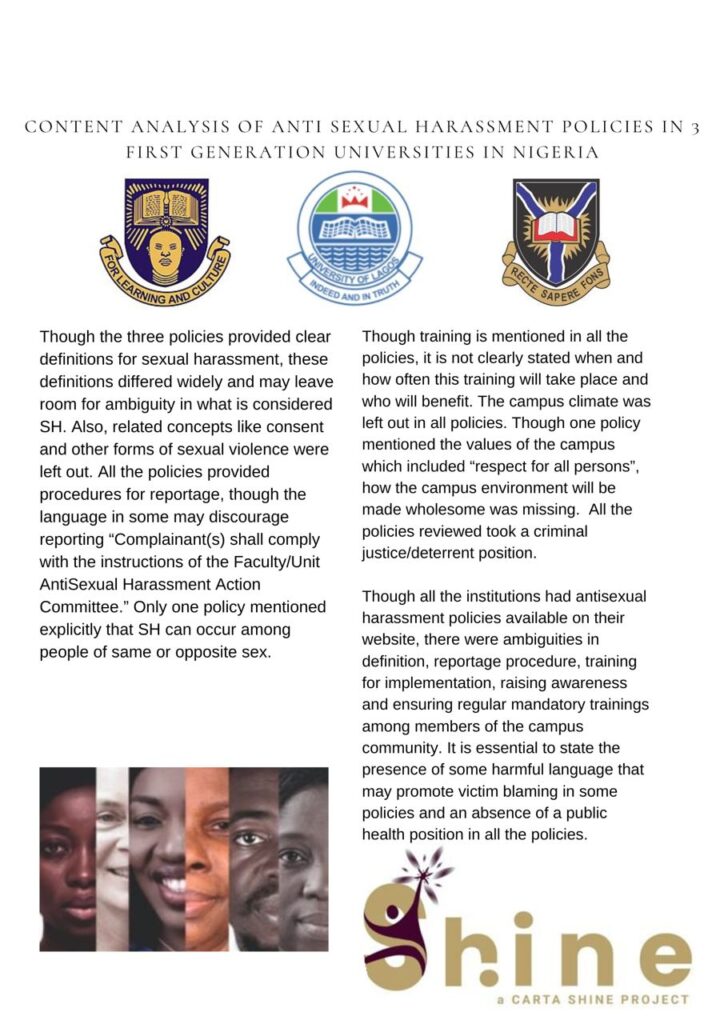
Though the three policies provided clear definitions for sexual harassment, these definitions differed widely and may leave room for ambiguity in what is considered SH.
Also, related concepts like consent and other forms of sexual violence were left out. All the policies provided procedures for reportage, though the language in some may discourage reporting “Complainant(s) shall comply with the instructions of the Faculty/Unit AntiSexual Harassment Action Committee.”
Only one policy mentioned explicitly that SH can occur among people of same or opposite sex. Though training is mentioned in all the policies, it is not clearly stated when and how often this training will take place and who will benefit.
The campus climate was left out in all policies. Though one policy mentioned the values of the campus which included “respect for all persons”, how the campus environment will be made wholesome was missing. All the policies reviewed took a criminal justice/deterrent position.
Conclusions
Though all the institutions had anti-sexual harassment policies available on their website, there were ambiguities in definition, reportage procedure, training for implementation, raising awareness and ensuring regular mandatory trainings among members of the campus community.
It is essential to state the presence of some harmful language that may promote victim blaming in some policies and an absence of a public health position in all the policies.


